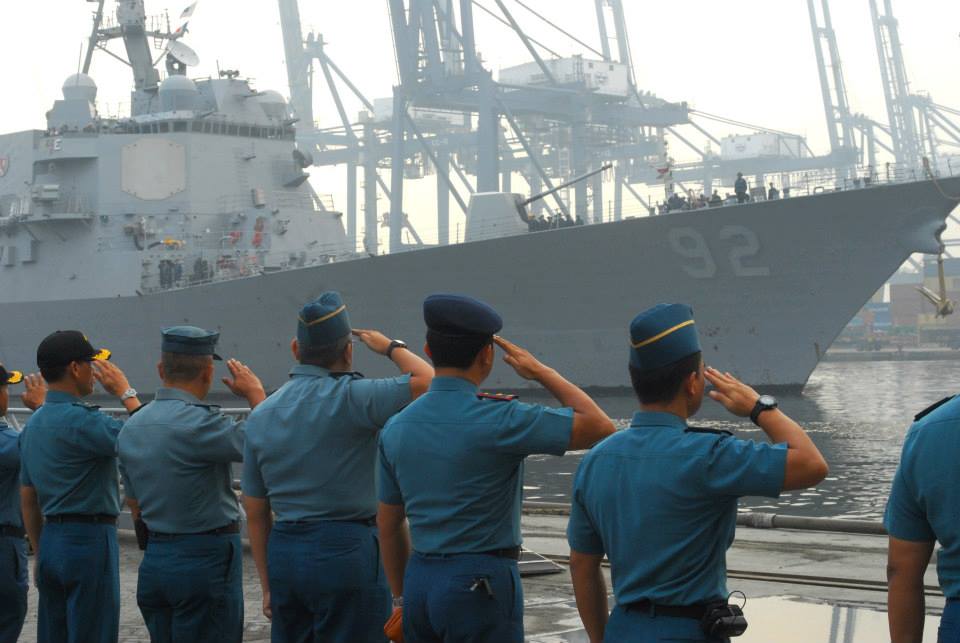
As mentioned on The Strategist, last week ASPI convened its first ‘Australia–Indonesia Next Generation Defence & Security Forum’ to discuss the state and future of the relationship. I talked about the strategic implications of the US-Sino relationship for the two countries, both individually and in a bilateral context.
How the US and China manage their relations is of key importance for Australia and Indonesia. Greater strategic competition could lead to serious conflict, even war, with devastating consequences. But accommodating any Chinese hegemonic ambitions could easily come at the cost of smaller powers and is therefore neither in Australia’s, nor Indonesia’s interests.
Luckily, US-China strategic relations are characterised by both cooperation and competition. As the new Australian Defence White Paper (DWP) stresses, this situation allows Australia (and I’d add, Indonesia) to avoid binary choices between Washington and Beijing. Our strategic interactions with the two major powers are not mechanistic ‘zero sum games’ in which cooperation with one country automatically comes at the expense of the other. We don’t (yet) live in a Cold War-type Asia and it’s far from inevitable that we’ll enter into such a period any time soon.
That said, as regional uncertainty about China’s strategic trajectory grows, being an ally to the United States is more beneficial than being non-aligned. For Australia at least, the best approach to walking among the two giants is a hierarchical one. Our alliance with the United States doesn’t stop us trading with China, or even from developing some degree of strategic cooperation. At the same time, when it comes to defence policy the US will always be our primary choice.
The recent Australia–China agreement to hold annual high-level strategic talks and conduct more military exercises is a case in point. It didn’t raise any eyebrows with the US. Washington knows that Australia is a reliable ally and that the more the Chinese military interacts with the outside world the better. And Beijing knows quite well that any attempt to drive a wedge between us and the US would be a futile exercise. Moreover, our alliance with the US facilitates a degree of independence in dealing with China. It’s precisely our strategic relationship with America that makes dealing with us important from a Chinese perspective, apart from our role as a resource provider. Finally, the US alliance provides Australian governments with some influence on the US in terms of how Australia would like to see the US-Sino strategic relationship evolve. That’s why the 2013 DWP argues that the government ‘expects’ both parties to manage their relations in a constructive manner to the benefit of the region.
When it comes to Indonesia, I’m not convinced that Jakarta’s ‘non-aligned’ (bebas aktif) foreign and security policy doctrine remains viable in the face of US-Chinese strategic interactions in Southeast Asia. Both Washington and Beijing will compete for influence in this area. But it’s China, not the United States, which challenges Indonesia’s security interests through its maritime claims in the ‘9-dash line‘. While the PLA does not yet have the capability to project significant military capability in waters close to Indonesia, it surely will in the future.
Non-alignment only works if you can protect your interests independently, including through the use of military power. The Indonesian armed forces are decades away from developing independent capabilities sufficient to protect Jakarta’s wider maritime interests. If accommodating China’s aggressive claims in Southeast Asia is undesirable for Jakarta, it will need to increase its political, diplomatic and also military toolbox. In other words, ‘hedging’ against China’s rise will become more important.
While this doesn’t mean that Indonesia needs to enter into any formal alliance arrangement, it means that increasing defence cooperation with countries such as the US, India and Australia could form the strategic backbone of what could be labelled as ‘modified non-alignment’. This would not preclude Indonesia from further developing strategic ties with Beijing. But as long as Indonesia can’t defend its maritime security interests independently in the face of rising China it will need more friends. Moreover, as its relative power grows, regional partners will expect Indonesia to play a more active security role in Southeast Asia.
Finally, Australia and Indonesia should discuss the military implications of a more crowded and competitive maritime Southeast Asia where both the US and Chinese military will have a greater presence. PLA activities in Southeast Asia will become more important for Indonesia—even more than for Australia given its closer proximity to contested maritime spaces. Moreover, fostering a common understanding between Canberra and Jakarta about the strategic implications of maritime chokepoints such as the Lombok Strait will be important given that the US ‘Air-Sea Battle’ concept and potential alternatives are partly based on ‘distant blockade’ strategies against China. In this context, Indonesia and Australia could also discuss trilateral exercises with the US Navy.
Walking with both the US and China is entirely possible without making confrontational choices. But it requires a strategy of signalling to China that coercion won’t have much chance of success. If China seriously considers challenging the United States in the Asia-Pacific then both Australia and Indonesia would have to make a choice—and I bet it won’t be China.
Benjamin Schreer is a senior analyst at ASPI. Image courtesy of US Navy.

